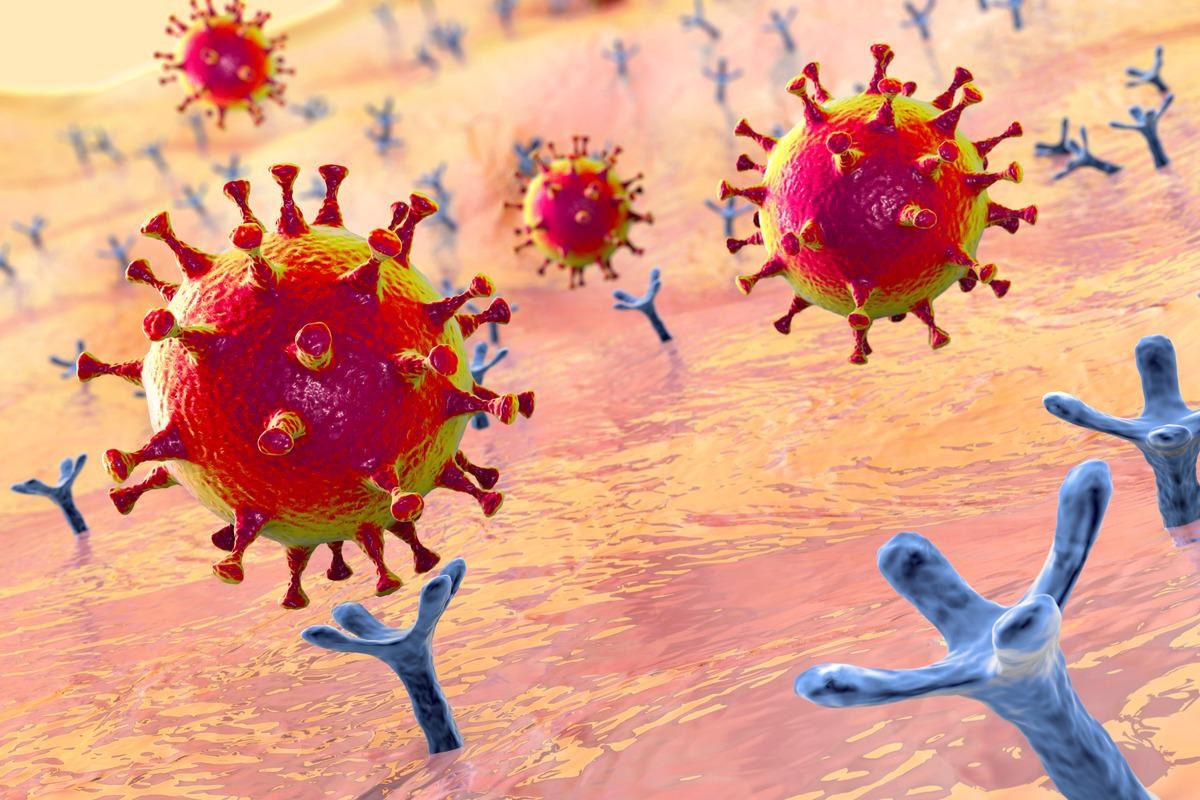With the severe acute respiratory syndrome coronavirus 2 (SARS-CoV-2) variant omicron’s explosive growth, the threat of continuing the coronavirus disease 2019 (COVID-19) pandemic is large. Despite the ongoing success of the vaccine rollouts, the emerging mutants threaten to extend the challenge of mitigating the virus. This is afflicting more with the limited knowledge of the omicron variant.
 Study: Mutations in RBD of SARS-CoV-2 Omicron variant result stronger binding to human ACE2 protein. Image Credit: Kateryna Kon/Shutterstock
Study: Mutations in RBD of SARS-CoV-2 Omicron variant result stronger binding to human ACE2 protein. Image Credit: Kateryna Kon/Shutterstock
In this context, researchers are investigating the behavior of the omicron variant and understanding its pathogenesis across the globe.
In a recent study, published on the preprint server, bioRxiv*, using atomistic molecular dynamics simulations, researchers from China studied the complex structure of the receptor-binding domain (RBD) of the omicron variant with the human host receptor angiotensin-converting enzyme 2 (ACE-2).
Omicron variant of concern (VOC)
The new variant was designated a VOC on November 26th, 2021, and the World Health Organization (WHO) named it (B.1.1.529) omicron. Many mutations, particularly in the spike proteins (that binds to the host receptor), are unprecedented. There are 15 mutations on the RBD and over 30 mutations on the spike protein. About ten mutations are at the RBD binding interface to the receptor protein, the ACE2.
The RBD on the spike protein is crucial for the initiation of infection, leading to the host cell entry. As most drugs target the spike protein, it is crucial to investigate the impact of these mutations in the omicron variant.
In the present study, the researchers questioned whether the RBD of the omicron variant binds tightly to the ACE2 and whether there is an alternative receptor that may facilitate the infection of healthy cells.
Study findings
For the present study, the researchers retrieved the information on mutations in omicron from the US CDC website. The researchers used computational modeling and dynamic simulations to investigate the interactions between the SARS-CoV-2 RBD and the host ACE2 proteins.
Previous studies have experimentally resolved, with successful homology modeling and simulations for the RBD-ACE2 complex and quantified the interactions – for SARS-CoV-2 infection to other animals.
Likewise, the researchers constructed and studied the structure of human ACE2 and the RBD of the omicron variant (denoted as ACE2-RBDΟ, where the superscript indicates omicron), using atomistic molecular dynamics simulations.
The researchers presented the phylogenetic tree of SARS-CoV-2, with the maximum number of spike protein mutations in the omicron variant so far. They also showed the mutation sites of the receptor binding sites, especially near the ACE2 binding surface.
The researchers found that the RBD and ACE2-RBD complex structures were stable – even in the case of the RBDΟ where mutations only slightly alter the structure compared to the wild-type. Based on the root-mean-square-deviation (RMSD) of the structures, the researchers predicted that the mutations in the omicron variant do not significantly reduce the RBD stability; instead, the ACE2-RBDΟ complex is even slightly more stable than the wild type complex.
Notably, the researchers reported that the RBDΟ is more rigid than its wild type (1.5 Å vs. 2.1 Å, according to the average values of the RMSF). While the 15 mutated residues caused fluctuations in the omicron variant compared to the wild type, the researchers observed that it is plausible that the binding to ACE-2 stabilizes these residues – thus, enhancing the stability of the ACE-2-RBDΟ complex.
The researchers compared the hydrogen bonding between the omicron RBD and ACE-2 with that of the wild-type binding and found that the interactions are enhanced in the omicron variant. Further, to assess the binding affinity between ACE2 and RBD, the researchers also computed and graphically presented the number of van der Waals contacts between the ACE2 and RBD, as well as the buried surface area.
They discussed the electrostatic potential centered around the mutation sites and computed the binding energies. The obtained values indicated a stronger binding between ACE-2 and RBDΟ compared to the wild type.
Conclusion
In conclusion, this study compared the wild-type ACE2-RBD complex system with the RBDΟ and found that the omicron exhibits stronger binding to human ACE2 protein – carried out quantitative analysis on the stability of the binding. This suggests that the omicron variant infects cells through the same mechanism.
Also, the infectivity might be enhanced due to the stronger binding interactions, though the mutation might not influence the antibody efficacy. In the face of the ongoing omicron variant spread across the globe, this study throws an important understanding of the virus and its binding to the host receptor.
*Important notice
bioRxiv publishes preliminary scientific reports that are not peer-reviewed and, therefore, should not be regarded as conclusive, guide clinical practice/health-related behavior, or treated as established information.
-
Lupala, C. et al. (2021) "Mutations in RBD of SARS-CoV-2 Omicron variant result stronger binding to human ACE2 protein". bioRxiv. doi: 10.1101/2021.12.10.472102. https://www.biorxiv.org/content/10.1101/2021.12.10.472102v1
Posted in: Medical Science News | Medical Research News | Disease/Infection News
Tags: ACE2, Angiotensin, Angiotensin-Converting Enzyme 2, Antibody, binding affinity, Cell, Computational Modeling, Coronavirus, Coronavirus Disease COVID-19, Drugs, Efficacy, Enzyme, Mutation, Pandemic, Protein, Quantitative Analysis, Receptor, Respiratory, SARS, SARS-CoV-2, Severe Acute Respiratory, Severe Acute Respiratory Syndrome, Spike Protein, Syndrome, Vaccine, Virus

Written by
Dr. Ramya Dwivedi
Ramya has a Ph.D. in Biotechnology from the National Chemical Laboratories (CSIR-NCL), in Pune. Her work consisted of functionalizing nanoparticles with different molecules of biological interest, studying the reaction system and establishing useful applications.
Source: Read Full Article
